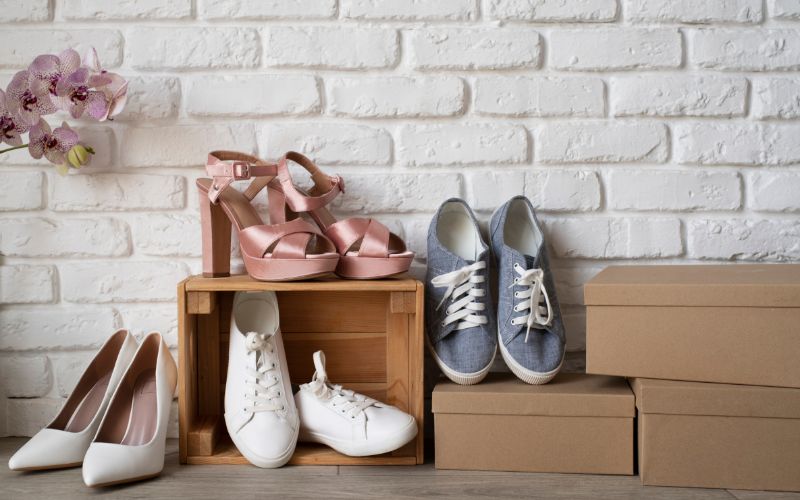Shoes are the kind of products that will always stay in constant demand. No matter what happens, shoe shopping will remain popular and essential. So selling shoes online is a good business idea for sure!
Any kind of business needs a lot of planning. From finding suppliers to marketing and delivery— there are a lot of things to consider before starting a shoe store online.
To make sure start your eCommerce business on the right foot, we have done some research and curated a step-by-step guide for you on starting an eCommerce shoe business.
Why sell shoes online in India?
It sees a robust market share in India
According to a report by Businesswire, the Indian footwear market is projected to display a robust growth with an annual growth rate of 8.28% during 2020-2025. In other words, now is the best time to start a shoe store online in India.
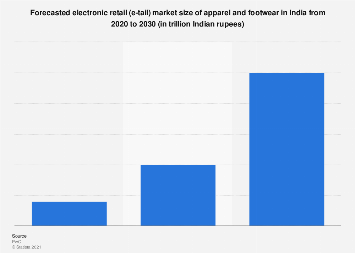
Forecasted e-retail market size of apparel and footwear in India from 2020 to 2030 (Source: Statista)
Footwear is an in-demand product
The average Indian buys at least 2 pairs of shoes every year. Footwear is an indispensable product and is replaced frequently. Therefore, shoe business owners have a good chance of getting repeat customers if the quality of their brand is good.
It is a good income source
You can count on a decent income if you sell shoes. The profit margin is about 80-130%.
If you offer customisation options, you can charge higher for it. You can also charge higher based on the material that you are using. Sustainable materials usually have a higher mark up.
However, you might face some obstacles when starting a shoe store:
- High financial investment- a shoe business needs a significant startup cost, though not enormous
- Competition from well-established shoe brands
- Changing fashion trends might make some products irrelevant and result in unsold stock
You will figure out how to overcome the risks listed above after reading our article.
Selling shoes online is comparatively more profitable than a physical shoe store. Here’s why: You have the potential to access a large customer base across the country, save a lot of money, and have the freedom to manage business remotely!
How to sell shoes online – in 6 steps
Waiting for the correct strategy, tips, and ideas to start your very own online shoe store? Read along to find out how to sell shoes online:
Step 1. Register your BusinessStep 2. Find out how you want to be UniqueStep 3. Decide footwear supply sourceStep 4. Decide where to sell shoes onlineStep 5. Delivery and payment systemsStep 6. Calculate cost and plan marketingBonus: Tips to make your online shoe store successful
Step 1. Register your business
First things first. Get the legal matters out of the way.
Although it is not necessary to register as a small business, it’s always good to do so.
Make sure you have all the necessary documents. Several businesses in India faced issues with compliance and documentation last year.
This small business tax blog will help you know more about legal matters for small businesses.
Step 2. Find out how you want to be unique
The footwear market is extremely wide with many well-established brands. That doesn’t mean your shoe store can’t stand out. Provided you find your niche and position your shoe brand as one-of-a-kind.
Your ideal footwear niche is the crossing point between your interest and demand in the market.
For example, you might be interested in selling sports shoes, but there are already big players in this niche, so your brand might get overshadowed.
We will discuss exactly how you can find which products are in-demand later in this article.
It is always best to sell specific types of shoes because there will be lesser competition from the big players. Going niche is always the best strategy in eCommerce. Read more about it here.
If you choose to narrow down to a specific category, what shoes can you sell? How do you choose from the wide range?
Choose the type of shoe you want to sell online
Here is a list that can help you decide how you choose the category of shoes you want to sell online:
1. Based on who wears them—men, women, or children:
- Women’s footwear: We don’t need any official data to say women are the most frequent buyers of shoes. If you decide to target women shoppers, that’s a great idea.
- Men’s footwear: Although men’s shoes don’t come in as much variety as women’s, the market is still good. Sports shoes, sneakers, and high-quality formal shoes are some types that can appeal to your male audience.
- Children’s shoes: This category can guarantee you the most active customers. Kids grow fast, as you know, which means they need a new pair of shoes every few months, literally! So you will have customers coming back to you again if they find your product good.
2. Based on the category:




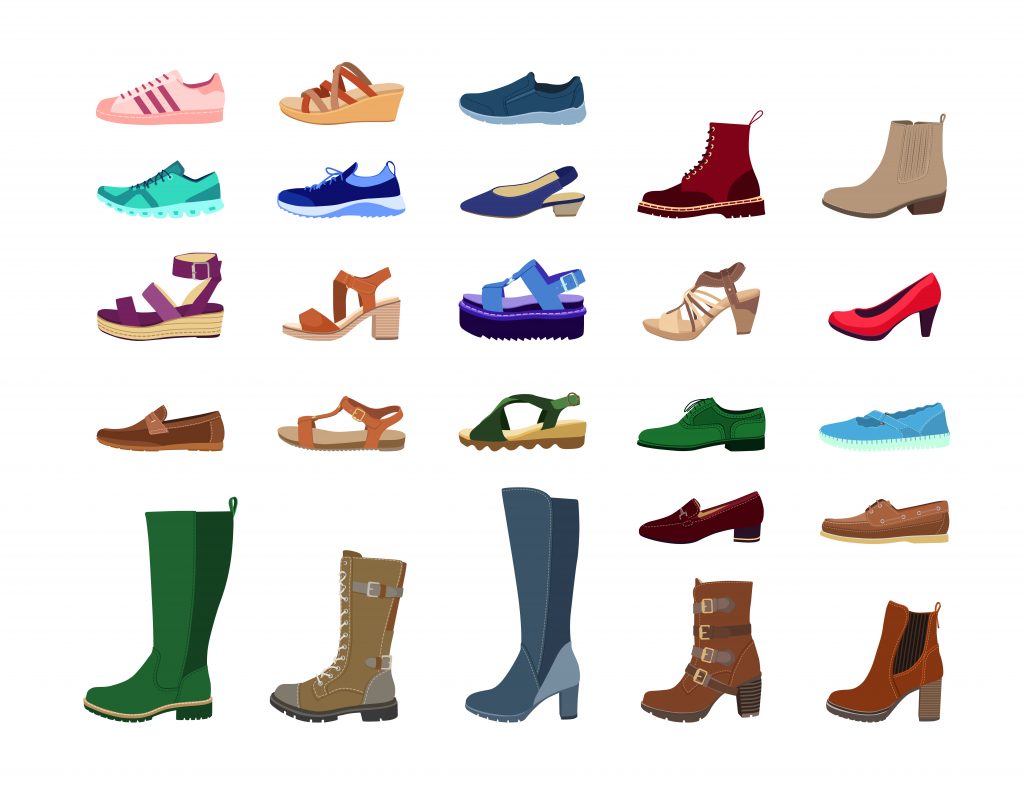




If you have decided on the range of shoes, congrats! Half of your work is done. Now for the next important part- find out who your buyers are.
Choose your ideal buyer
Why is defining a target audience important? The more you know about your consumers, the better you can sell your products— especially in the digital world.
Once you identify your niche, it is easier to identify potential buyers. Also, note that finding a relevant audience and then identifying the best products for them is also a good strategy.

Some points to consider when defining the target audience:
- Average age and gender
- Average income
- Do they like classic items or quirky and colourful ones
- Shopping frequency for shoes
- Where they hang out mostly- social media
Here is our ultimate guide to identifying and catering to a target audience
How to determine demand in the shoe market?
You need to know if your footwear niche will sustain in the digital world. Follow these simple techniques to find out what type of shoes are in-demand:
- Go to popular online marketplaces and see best-seller shoes. This will give you an idea of what shoe shoppers like
- Do a little research on Google trends to find out what online shoppers are searching for. Check which products have growing interest.
- Read reviews of footwear products on online shoe stores, especially your competitors. This will give you an idea of what your audience likes/dislikes.
Have you decided on your niche? To make sure it’s clear, try describing it in one sentence. You should be able to describe the type of shoes and the demographics of your target audience.
Here is a sample description of a footwear niche: Selling quirky sneakers with colourful patterns for young adults of age 18-26, located in metro cities.
Step 3. Decide on your footwear supply source
This step is probably the most important one because it determines your business model and elements such as how much money to invest, time to spend, and dependency.
You will know exactly how to sell shoes online. Consider these 5 points before deciding:
- How much money do you plan to invest?
- Warehouse availability and location- do you want it to be located in your state or somewhere else?
- Do you want a manufacturer to produce unique footwear?
- How involved do you want to be in the whole process from manufacturing to shipping?
- Your chosen niche
For shoes and almost any other physical products, you have three main options for supply:
1. Sell shoes via third-party (dropshipping):
This is the best way to start an online shoe store without inventory. In the dropshipping method, you act as an intermediate between the shoe manufacturer and the customer.
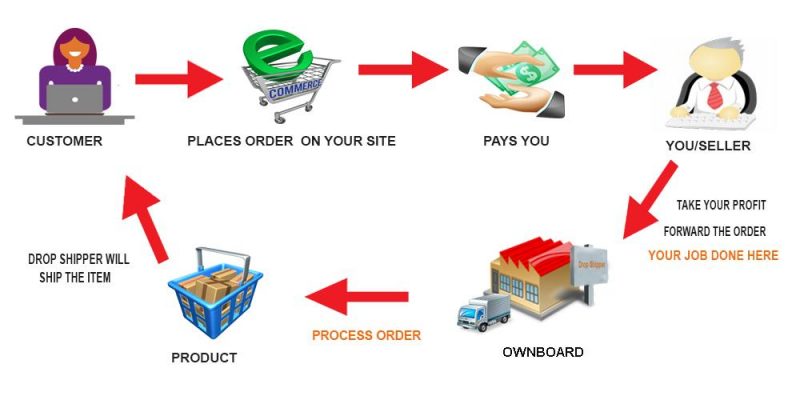
- Dropshipping Business Model (Image credit: Amnesty India)
Your job is to promote the shoes online (mostly through social media), collect orders, and send them to the supplier who will pack and send the products.
The big advantage is that you need little to no start-up capital and don’t have to bother about production, storage, and shipping.
2. Get a reliable wholesale supply
Collect shoes from one or many sources in bulk and gradually sell them out. You can decide on an assortment of footwear.
The risk involved is one step higher than in the dropshipping method but you will be less dependent on the manufacturer.
You can find footwear wholesalers and manufacturers who offer drop shipping services through a simple Google search or online directories of enterprises.
3. Create your own range of shoes
In this model, you are responsible for designing, sourcing raw materials, and manufacturing. In short, your own shoe company. Therefore, you have the opportunity to build a unique brand, and thus eliminate a lot of competition.
Have you decided which model is best for your online shoe business? Make sure the supply is stable and products are of good quality.
Enjoying this blog? Subscribe to our weekly blog digest and get free business growth tips and inspiring stories straight to your inbox!
Step 4. Decide where to sell your products
You have decided on your business model and the range of shoes to sell. But where do you sell them online? How do you reach the target audience? You have three options:
- Social media
- Online marketplaces
- Own website
Selling on social media
Social media is the easiest place to sell shoes online. You can leverage influencer marketing to reach a wider audience.
Create eye-catching content by yourself or hire a social media manager for the job.
We would recommend Instagram and Facebook for selling shoes online. See how this D2C brand is using Instagram reels to promote their beautiful handmade Indian traditional shoes!
View this post on Instagram
Important: When collecting payments on social media platforms, beware of fraud! You could ask customers to transfer via GPay, PhonePay etc. in the beginning.
But when orders start pouring in, this is not an effective method. We have a solution for you— Instamojo payment links. You will be able to collect payments online anywhere, anytime.
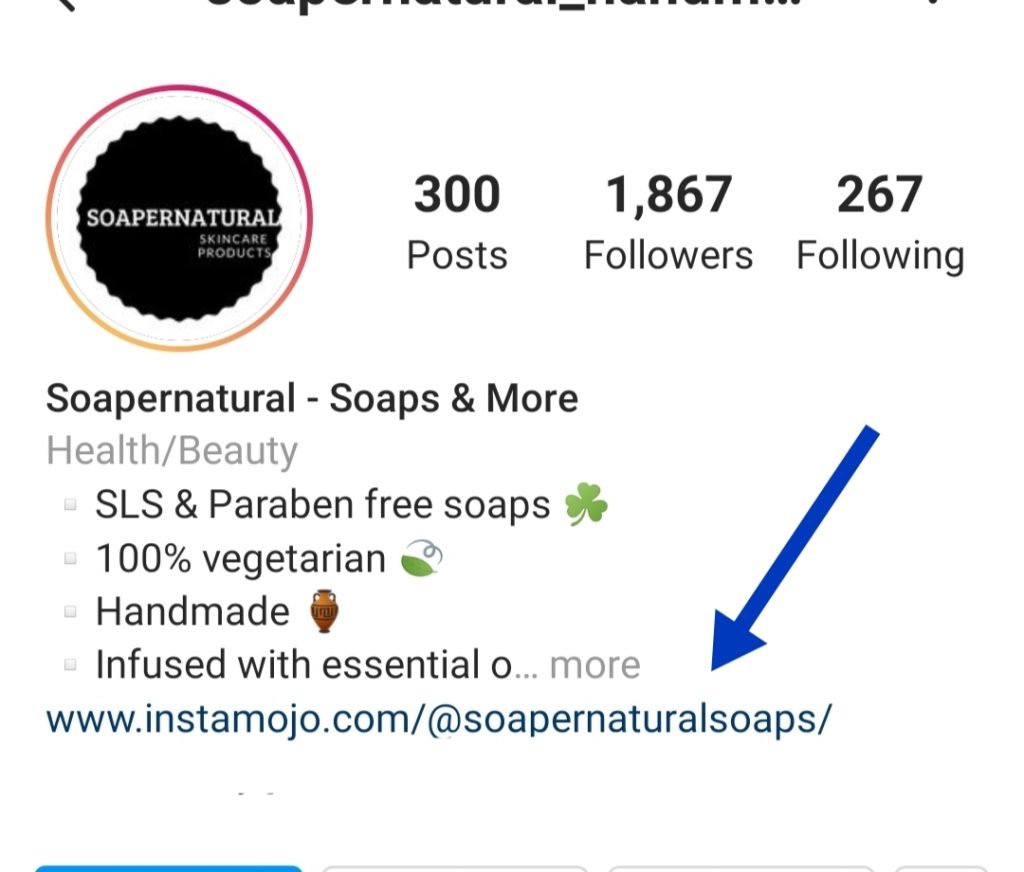
- An Instamojo payment link used by Soapernatural, a small business on Instagram
Selling on an online marketplace
Selling on big marketplaces like Amazon is more professional. You don’t have to worry about a shortage of customers because many online shoppers rely on such platforms.
There are some drawbacks like:
- Delayed realisation of sales
- Little to no control over your inventory
- Getting overshadowed by the giants
There is one way to make your shoe brand stand out and attract repeat customers:
Start your own online shoe store
How to start selling shoes online? Selling on your own eCommerce store is one of the best ways.
To start your own shoe store online, you need a website. Creating an online store is easier than you think.
There are many platforms out there which offer hassle-free methods to set up an online store. A good eCommerce website has features like secure and integrated payments, a good user interface, shipping, and tools for marketing.
With Instamojo, you can start selling shoes online in minutes. You can easily create your own eCommerce shoe store that you have always dreamed of!
Related Read: How to set up your Instamojo Premium Online Store
An eCommerce shoe store gives you full control over your business. You can build your very own shoe brand!
You will be able to experiment with different marketing strategies and scale up your shoe business online. With your own eCommerce website, the sky’s the limit!
Step 5. Delivery and payment systems
Integrate payment systems that are safe, and smooth, and provide the customer with as many choices as possible.
Every online business needs a reliable delivery partner as well. Luckily, with Instamojo, you get both of these features. Learn more about the best payment gateway for small businesses.
Step 6. Calculate cost and plan marketing
Now that you know exactly how and where to sell shoes online, you can easily decide the budget for initial costs.
Here is the most basic list of things you need to budget for when starting your own shoe business:
- Own eCommerce website
- Creating a stock of shoes (not applicable if drop shipping)
- Advertising and marketing
- Taxes
- Salaries for employees
- Office and/or warehouse rent
- Packaging
You now know the pathway to follow for starting your very own online shoe business!
Bonus: Tips to make your online business successful
There are a lot of things you can do to make your eCommerce website for shoes successful.
Here are a handful of tips:
- High-quality product images and convincing descriptions.
Never compromise on the quality of pictures on your online store! The customer should get a clear idea of the shoes they intend to buy. Craft convincing product descriptions which include size charts, special features, material, and other relevant details.
- Unique brand name
The name of your shoe brand should stand out and be memorable. It has to be easy to pronounce, and to recall.
- Collect customer feedback when possible
Always put your customers first. Address their issues and find ways to make their online shoe-shopping experience as smooth as possible. Ask them how you can improve customer experience.
Did you find this article helpful? Subscribe to our weekly newsletter. You will get free business growth hacks and ideas directly to your inbox!

